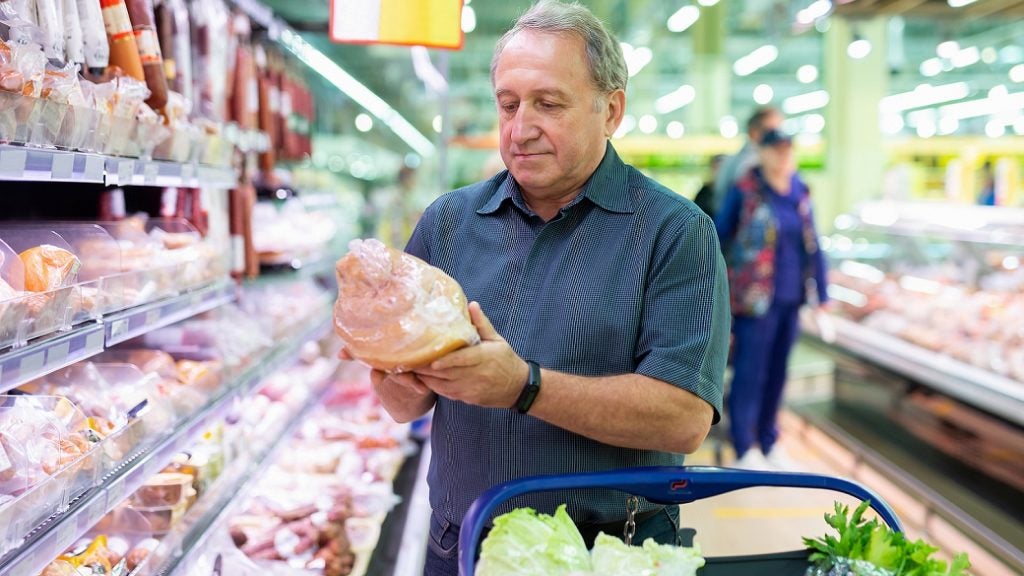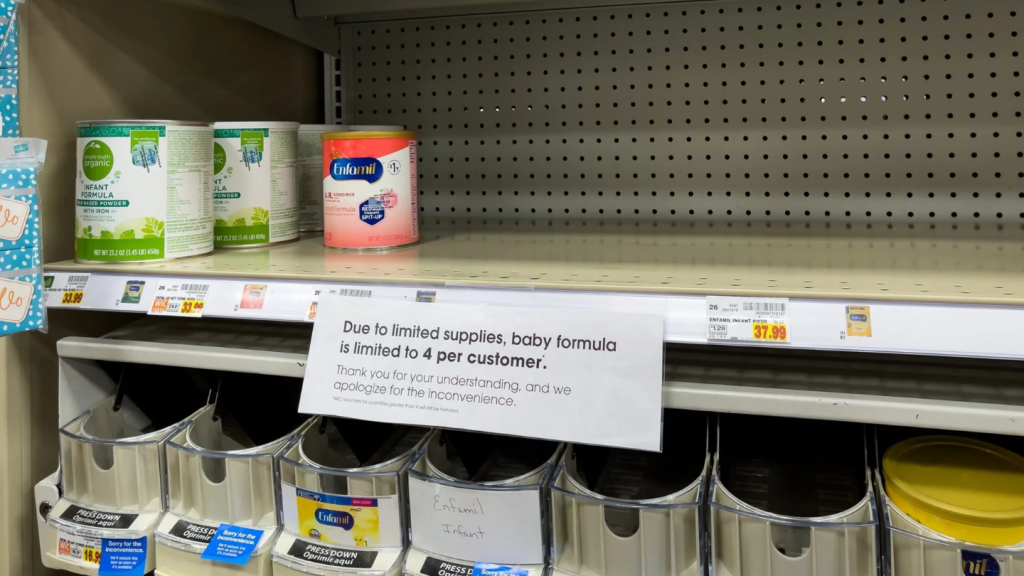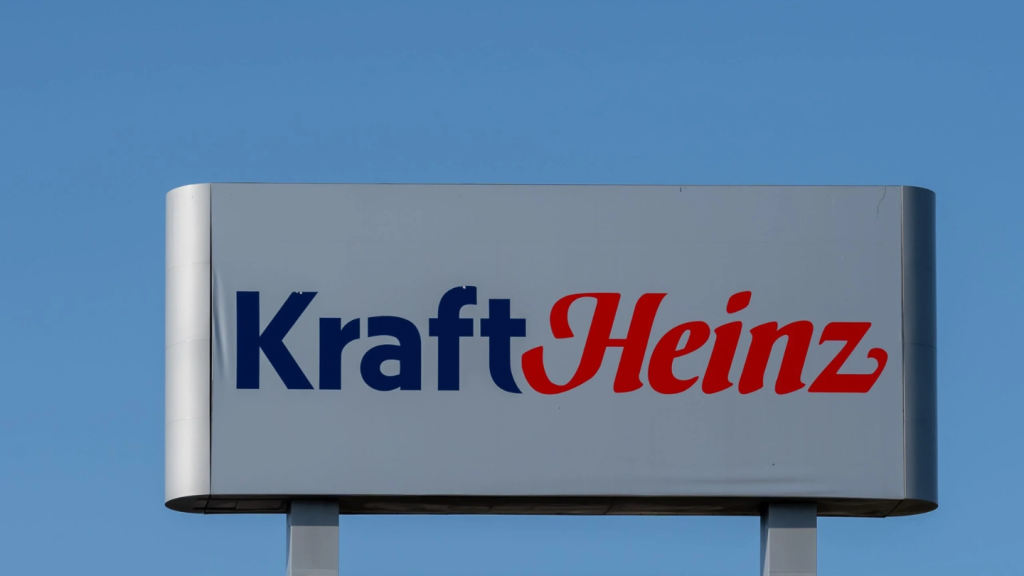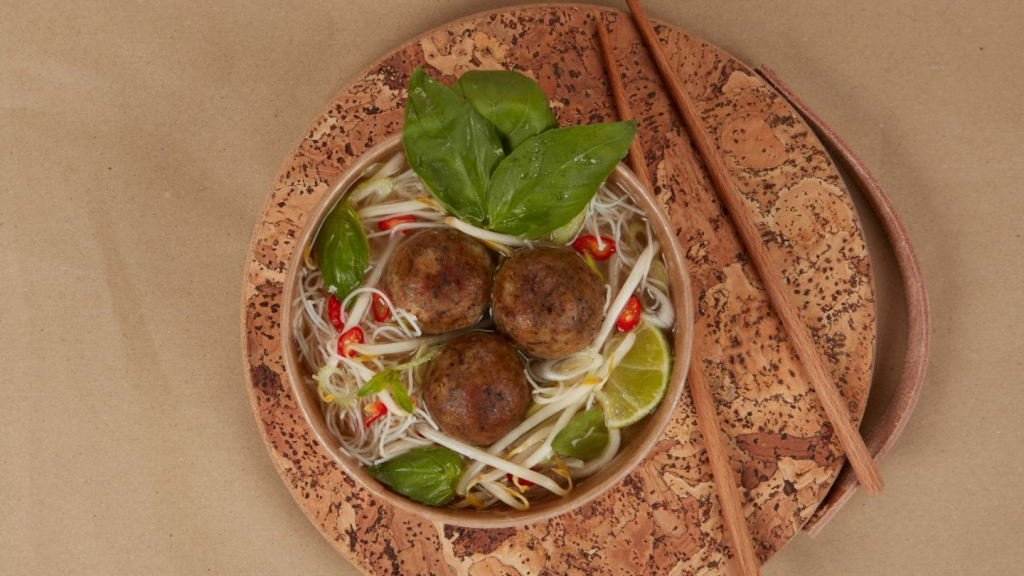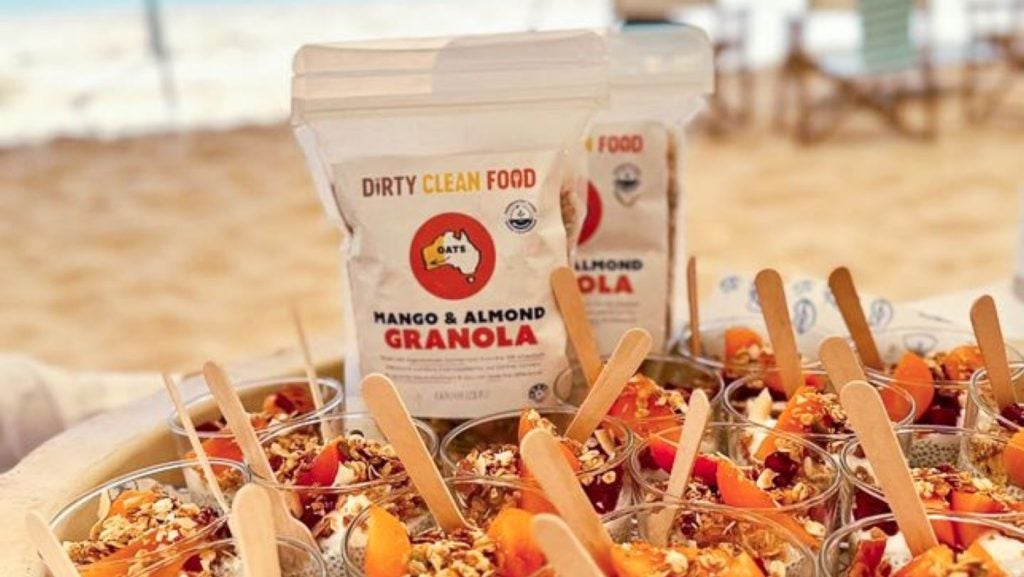Argentina has just certified the very first ‘carbon negative’ beef. The silvopasture system on the trial farms, with cows grazing in a forest environment, has resulted in more emissions being sequestered than the cows emitted, explained Rodolfo Bongiovanni, from the National Institute of Ag Tech (INTA), in Argentina, and one of the project leads. “In that balance, in that plus and minus, is where this value arises – a carbon neutral or rather negative meat value,” he told La Nacion.
It is a bold claim and one that’s not just being pinned to beef either. Brewers are quite keen on the concept, too: BrewDog claims to be a carbon-negative brewery, while London craft beer maker Gypsy Hill already has two carbon-negative brews “fully tracked through their life cycle, all done without [carbon] offsets”.
There are also furniture companies, beauty brands and fashion labels all claiming to be carbon-negative. Carbon-negative rum is the signature beverage for Two Drifters, a distillery based in the UK. “It’s about going further than a balanced equation,” says co-founder Russ Wakeham. “It’s also about showing that it can be done,” he adds.
So, is carbon negative a claim that could catch on; or one that could actually catch consumers out?
Let’s start with the definition which, as ever in the world of green claims, is hard to fix and all too easy to fudge. The simple definition, as Bongiovanni alluded to, is that a carbon-neutral product removes as many emissions as it emits, while a carbon-negative product is one that should remove more carbon than is released.
Scientists at the University of Stirling in the UK are, for example, developing a new carbon-negative food source: the root systems of new trees are being covered with fungi that produce edible mushrooms, which could sequester up to 406kg of carbon for every kilo of protein produced. “This is a game-changing idea which, if done at scale, will increase domestic food production, incentivise tree planting and help mitigate the impact of climate change,” explains Professor Paul Thomas, who is leading the two-year trial with truffle producers Mycorrhizal Systems.
But there are short-cuts to carbon negativity, too. Carbon offsets or credits can be purchased, for example, in the same way they are to make carbon-neutral claims – only companies buy more of them to boast of carbon negativity.
Negative press
This approach has, particularly of late, had its critics who claim it is ‘greenwashing’. Food and drink companies including Nestlé, Danone and Mars that use the term carbon neutral have been accused of being more interested in marketing products than mitigating emissions. Some have faced court cases, while in Europe there is a looming ban on making carbon-neutral claims using offsets. If the rules are passed, companies “will only be able to offset the unavoidable emissions, and consumers will know which share they represent”, explains Dimitri Vergne, sustainability team leader at BEUC, the European Consumer Organisation.
The draft law, likely to come into force in 2026, relates to claims based on offsetting, and products claimed to have neutral, reduced or positive impact on the environment in terms of greenhouse gas emissions. It would likely encompass carbon negative claims using carbon offsets (or credits) but it’s not a fait accompli.
A product cannot be carbon neutral or negative based on offsetting schemes
Charlotte Bande, Quantis
Still, it’s a legal and reputational risk for companies to make such claims, warns Lindsay Otis Nilles, policy expert at Carbon Market Watch, an independent watchdog that tracks international climate policy. Charlotte Bande, the global food and beverage sector lead at consultancy Quantis tends to agree. “A product cannot be carbon neutral or negative based on offsetting schemes. Even the most sustainable product still causes emissions.”
That may be true but there are also good offsets and bad offsets (as well as insets, which we will come back to). One of the most prominent investigations, run by The Guardian newspaper, claimed 90% or more of rainforest carbon offsets sold by Verra, the world’s biggest certifier, were “worthless”. The voluntary carbon market has rallied to defend its reputation. A February survey of 145 global firms by the Voluntary Carbon Markets Integrity Initiative showed two of the top three reasons for not buying carbon credits were fears over greenwashing and uncertainty about what represents high-quality carbon credits.
Wakeham at TwoDrifters is confident the credits he buys are rock solid – literally. “We partner with Climeworks to purchase carbon dioxide removal from their operational direct air capture facilities,” he explains. “The carbon dioxide is captured and subsequently mineralised and stored underground through the ‘carbfix’ process. We pay a price per tonne of carbon dioxide captured. However, the point is not about simple removal, but more focused on avoidance,” he adds.
Indeed, reductions should remain the priority. Buying the credits for the carbon that can’t yet be reduced acts like an “internal tax”, Wakeham continues, which is “driving us to avoid as much carbon dioxide in our process and supply chain as possible. The less CO2 we create, the less we pay to remove.”
Storm brewing
So how about those carbon insets? This is where everything becomes trickier. These are basically offsets “brought home”, in other words carbon sequestered within a product’s own supply chain. The trees and soils in that Argentinian beef system are sucking in carbon to balance the emissions from the livestock, for example. And that Gypsy Hill beer is made using barley that “sequesters more carbon dioxide than it produces”. A life cycle assessment published on the company’s website explains: “The specific process of Gipsy Hill Brewing using regenerative barley [from Wildfarmed] within their supply chain to reduce [greenhouse gas] emissions is ‘carbon insetting’.” The result? The 30-litre kegs of Trail Pale beer emit -0.07kgCO2e/l, while for Swell Lager it’s -0.05kgCO2e/l.
Selling the beer in cans does tip the balance past neutral, mind, but the brewer says its aim is to keep reducing carbon in any way it can. “The road to being a carbon-negative brewery is easy – we can pay to offset everything we do. But let’s be honest: that’s the easy road and we want to make more meaningful change. Our goal is to eventually become carbon neutral, through as much insetting as possible.”
The jury on insetting is however still out. Insets sound very similar to offsets, which have been tainted by scandals and scared brands away from buying them. Bande advises her clients at Quantis to refer not to insets but “reductions and removals in the value chain”. The whole area of carbon sequestration – the process of capturing and storing atmospheric carbon dioxide – is a can of worms, she suggests.
Carbon cock-up?
For a start, carbon sequestration cannot be easily assessed or tracked yet (though the technology is improving). Some research has suggested bucket loads of carbon can be stored in soils, trees and hedgerows on farms, but recent work has placed large question marks over some of the claims. Caspar Donnison, from the UC Davis department of plant sciences, has assessed some of the carbon neutrality claims being made by the livestock sector in the US, Europe and Australia and found that some of them are “too good to be true”. A paper in the journal Environmental Research Letters unpicked several studies and discovered a “distorted understanding” of the climate impact of livestock production.
My worry is carbon sequestration is being oversold and used as a get-out-of-jail-free card
Professor Pete Smith, University of Aberdeen
“My worry is that [carbon sequestration] is being oversold and used as a get-out-of-jail-free card by the livestock and dairy sector generally,” says Professor Pete Smith at the University of Aberdeen who has been working in this field for three decades. Research that Smith recently had published in Nature Communications alongside academics at Wageningen University in the Netherlands represents a “nail in the coffin” to the idea that the emissions from the current livestock population can be inset in this way, he explains. “There is only so much land to go around.”
Meat and Livestock Australia has a carbon-neutral target to hit by 2030 and says the 355 million hectares used for red meat production is an “opportunity to store vast amounts of carbon [and that] has always underpinned our carbon neutral goal”. There is an acceptance that other technologies – for example changing feed to reduce methane emissions – will be needed, though. The carbon storage rate in trees and soils will “fluctuate/slow over time and may reach saturation”, an MLA spokesman explains. How much carbon can be stored and how soon that saturation point is reached is unclear – but some claims are already coming unstuck as a result.
Jigsaw Farms in south-western Victoria in Australia has been a “beacon of hope” for the red meat industry”, reported Euronews after boasting of its carbon neutral status in 2011. However, since about 2017 (the same year that MLA announced a target of carbon neutral emissions by 2030) Jigsaw has been emitting more greenhouse gases than it can sequester. “We always showed in the original audit that the farm would be carbon neutral between 2010 and 2017, and then diminishing returns would mean the methane continues, but the sequestration levels out,” explains Richard Eckard, a professor at the University of Melbourne who has a report undergoing peer review on the farm’s emissions balance.
The farmer involved, Mark Wootton, admitted he was perhaps a bit “cocky” at the outset, thinking they’d conquered carbon emissions from livestock farms. Bongiovanni at INTA is hedging his bets. “The key to the favourable outcome is a low animal load (one head every two hectares in San Esteban and one head in ten hectares in Ralicó),” he tells Just Food. “I am not able to guess if [these] results are going to hold in the long term. We’ll see in five years,” he adds.
Barking about trees
By then, the EU’s carbon claims may well have shrunk thanks to the new laws under the Green Claims Directive and the directive for empowering consumers on the green transition. That the EU is tightening the net on carbon claims has also impacted food and drink brands on the other side of the Atlantic where there is heightened scrutiny of such claims too. Companies including Danone have been under attack for their carbon-neutral claims; carbon-negative claims “are bound to follow the same trend”, says Bande at Quantis.
BrewDog found itself on the wrong side of the UK’s Advertising Standards Authority (ASA) in December after it failed to explain in adverts the basis of its ‘carbon negative’ accreditation. CEO James Watt was clearly miffed about the marketing muddle. “You can all sleep more soundly now, knowing that the ASA is protecting you from insufficiently extensive carbon accounting data in your Insta feed,” he wrote on LinkedIn.
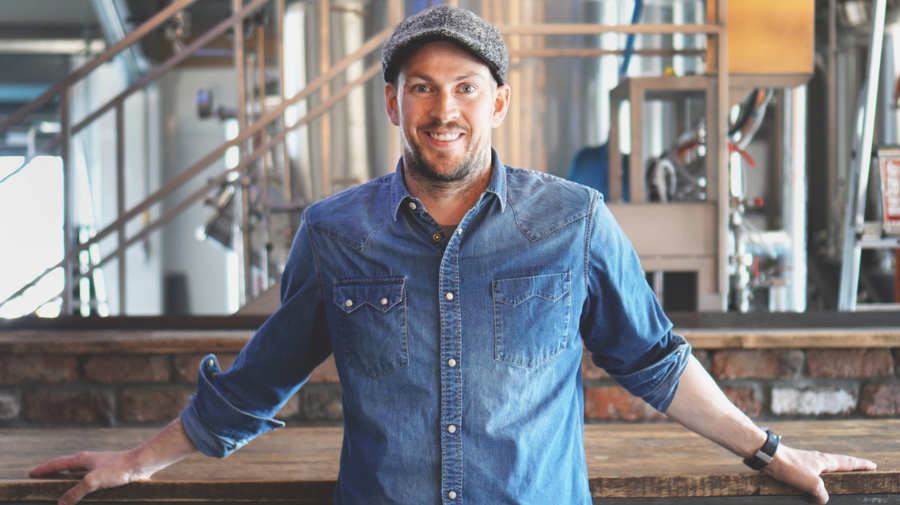
Businesses have to be really clear about what they claim, though. Sally Smith, chief sustainability officer at Flora spreads owner Upfield, says it’s difficult for brands to communicate complex claims, like sequestration approaches, in the aisles. “We communicate with absolute numbers as well as comparisons,” she explains, “and we only make claims where we know there is significant difference and when we can back them up [with credible life cycle assessments]”.
Regulators are on the hunt for those who don’t and so, too, are campaigners. The likes of the Changing Markets Foundation have accused companies of “deception”, in particular those in the business of producing livestock products, for trying to “green” their products with carbon neutral (and now carbon negative) claims that “hide” the considerable carbon footprint of cheese, meat and milk.
Even some in the industry are concerned by such claims. The implication of the claim carbon negative is that the more you consume the lower the impact, notes one manufacturer, but how can you say that the more beef you eat or the more beer you drink the better the world is?
Indeed, chief among the concerns should carbon-negative claims spread is the confusion it creates among consumers – and the impact this has on efforts to shift consumption patterns and mitigate climate change more widely.
Brands are seeing this as a way to differentiate, increasing brand loyalty and recognition, explains Gill Wilson, a sustainability marketing professor at IE Business School in Madrid. In categories like craft beer and in countries like the UK, brands are competing for a fickle consumer that is keen to always try out new styles, so carbon claims “might not be a category driver but they can be a category differentiator”, she says.
Jennifer Yule, a lecturer in marketing at the University of Edinburgh business school, sees an “attention war” going on in the supermarket aisles. Brands are in a “state of panic” trying to align with the values of the consumers who really care about these issues, she adds.
The result is a proliferation of carbon claims, with each trying to outdo the next. And that has left consumers struggling to see the wood for the trees.
A 2022 survey conducted by Morning Consult showed most US consumers don’t know what carbon-neutral means. A 2023 study by Hartman Group looked at the various phrases linked with removing more greenhouse gases from the atmosphere, including carbon negative, carbon positive, climate positive and nature positive. “[…] companies should use only one of these terms to describe the act [or] practice of removing carbon from the atmosphere,” the group said in its Sustainability 2023 report.
In a 2022 survey from a German consumer protection organisation, only 13% of respondents linked carbon-neutral claims to offsetting. Research by the Authority for Consumers and Markets in the Netherlands has concluded that “there is a serious risk of deception when using general and vague terms such as ‘carbon neutral’ and ‘climate neutral’”.
Smith says Upfield doesn’t make carbon neutral or carbon negative claims at a product level. “We don’t want to risk confusing consumers or for them to think all our products are carbon negative,” she explains. “Ultimately, it’s important for consumers to start to understand the impact of the food they eat today.”
Once bitten
Nestlé is among those that have been criticised for allowing individual brands to make carbon-neutral claims using offsets, despite not doing so at a company level. “[…] most of the relatively small number of brands who did this are now moving away from it in line with the evolving external context,” a spokesperson says, adding: “The situation varies around the world and there may be a handful of Nestlé brands who continue making neutrality claims. We provide a robust framework for ensuring this is done in the right way and is only ever additional to and not a replacement for company decarbonisation efforts.”
This myopic tunnel vision on greenhouse gases means that other problems are ignored
Carl Olivier, Sustained
There is little doubt the controversies around carbon neutral will have tainted similar claims, including carbon negative. Edinburgh University’s Yule identifies a “mismatch” between the brands and the messaging. She says it makes perfect sense for a start-up to promote about their environmental efforts when it forms part of their core remit – “as a consumer you can read that and you’re drinking the Kool-aid”. But when one of the food or drink behemoths has a go it’s far harder to swallow. “It’s not what they stand for, so that’s when you see the carbon claims being used as a PR [and] marketing communications tool”.
Some also wonder why brands maintain this fixation on only carbon to communicate with consumers. “This myopic tunnel vision on greenhouse gases means that other problems are ignored, and in many cases exacerbated, which will lead to some nasty outcomes,” says Carl Olivier, CEO and co-founder at Sustained, a tech start-up specialising in life cycle assessment for food and drink manufacturers. With this in mind, he adds, carbon negative seems a lot less helpful as a term than something like “environmentally positive”.
The search for the perfect green claim continues but guilt-free consumption is some way off.


